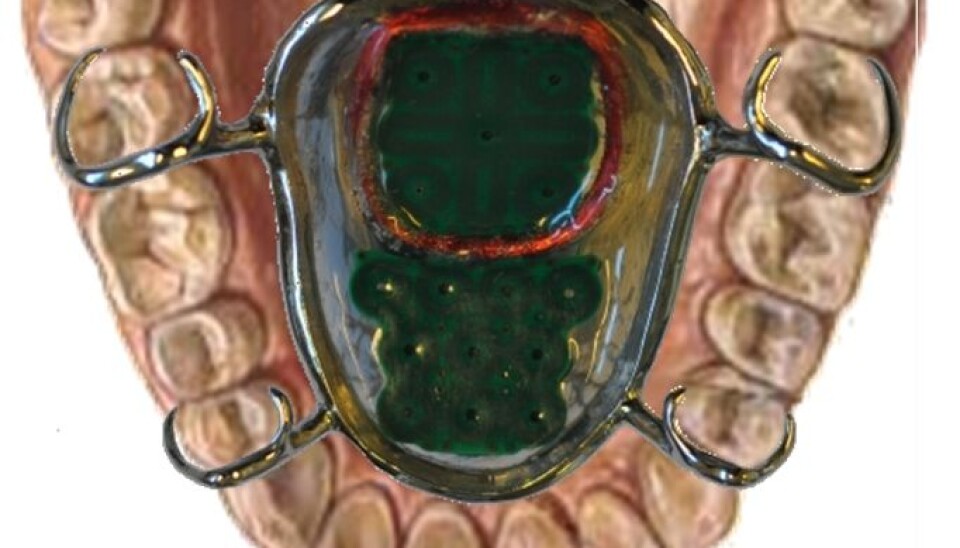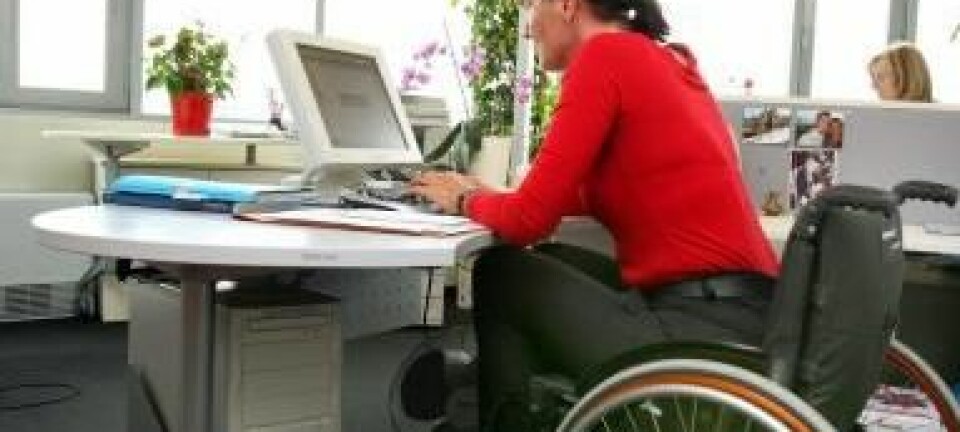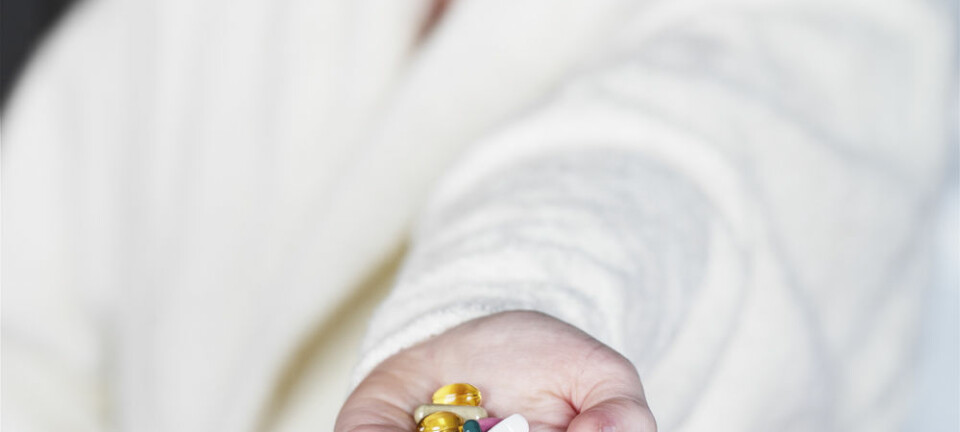
The tongue is the future for disabled people
Danish scientists have developed a groundbreaking product that enables paralysed people to control wheelchairs, computers and TVs with their tongue.
Most of us can open a door, send a text message or zap between TV channels without much bother.
But for those who are wheelchair-bound with paralysis after a spinal cord injury, even the simplest everyday tasks are a challenge. Many of them are paralysed from the neck down and as a result are totally dependent on others to help them.
But a new product, called iTongue, aims to help these people regain control of their lives.
Palatal plate with sensor
The product is based on a so-called ‘wireless tongue control system’ in which a dental palate with sensors can help paralysed people control their wheelchair, mobile phone or their computer by using a small metal plate which is fastened to the tongue.
We humans are able to point to all 32 teeth with our tongue because a large section of the cerebral cortex is dedicated to the tongue. This means that we can actually control the tongue like a finger.
“The system offers paralysed people more freedom and a higher quality of life as it makes it easier for them to switch between operating the wheelchair, the computer or other forms of assistive devices,” says the researcher behind the product, Lotte N. S. A. Struijk, an associate professor at the Center for Sensory-Motor Interaction (SMI) at Aalborg University,
“In the long run, the appliances you can control with your tongue will only be limited by the imagination.”
The tongue is as mobile as a finger
The tongue is particularly interesting in connection with paralysis, since it is controlled by a cranial nerve and is thus not affected by spinal cord injuries.
“This means that a person who has been paralysed from the neck down and may not even be able to breathe on his or her own will still manage to move the tongue.”
In our surveys, the users placed great importance on functionality, but also on the aesthetics – that the product is discrete enough for the users to retain their identity and dignity and not have to sit with something sticking out of their mouth.
Struijk says the new system is far more advanced than the various systems that are already on the market – such as eye control and so-called ‘Sip-N-Puff’ mouth-controlled joysticks, where the user can control a wheelchair or certain features on a computer by either blowing into or sucking from a straw.
The tongue has the benefit of being a highly flexible and mobile muscle, which can be active over long periods without fatigue and can be controlled with great precision.
“We humans are able to point to all 32 teeth with our tongue because a large section of the cerebral cortex is dedicated to the tongue. This means that we can actually control the tongue like a finger, which creates many more opportunities than, say, Sip-N-Puff.”
More discrete than other products
Another advantage of using the iTongue is that it’s more discrete than other assistive devices currently on the market.
”In our surveys, the users placed great importance on functionality, but also on the aesthetics – that the product is discrete enough for the users to retain their identity and dignity and not have to sit with something sticking out of their mouth,” says the researcher.
The system’s three units
- The mouth device looks like a palate plate and consists of 18 sensors, a rechargeable battery and electronic bits to process the signals from the sensors.
- The activation device is a little 1 x 2 millimetre metal cylinder that needs to be placed on the tip of the user’s tongue in order to activate the sensors in the mouth device.
- The central processing unit (CPU) is a microcomputer which communicates wirelessly with the mouth unit. When the CPU detects a signal from the mouth unit, the relevant function, such as driving the wheelchair forwards, is activated.
How iTongue is used
The user moves the tongue with the tiny activation metal on its tip up towards the sensors in the mouth device.
The activation device causes a change in the magnetic field around the sensor that is registered as a commando signal – for instance the typing of a character.
Thirty times per second, all 18 sensors are read off by the electronics in the mouth device. The readings of each sensor are then sent to the CPU, which compares the values of all sensors to a threshold value indicating activity or no activity.
If a sensor has been activated, the CPU will send the command that is allocated to this sensor on to the system that has been connected with the iTongue, for instance a computer or a wheelchair.
The functionality is best described as a keyboard with 18 keys. Any type of system that can be operated with 18 keys can, in principle, be controlled with the iTongue.
Could also benefit surgeons and pilots
It isn’t only people with spinal injuries who can benefit from this technology. Patients with e.g. sclerosis or spasticity will eventually also be able to use the system, says Struijk.
The same applies to people who are not disabled but who in their work need to have their hands and feet free for other tasks – for instance a surgeon who’s operating or a combat pilot whose hands are busy.
On the market this September
Struijk and her colleagues have been working on the iTongue since 2003, and the product is currently being prepared for the market by the spin-off firm TKS A/S, which is gathering the remaining approvals required for the product to be used as a medical device.
The company’s CEO, Gert Spender, says that the iTongue will be on the market in September 2012.
----------------------------------
Read this article in Danish at videnskab.dk
Translated by: Dann Vinther






